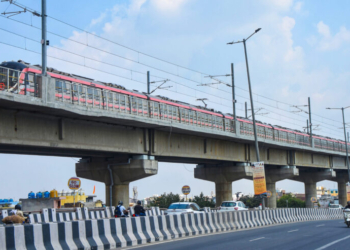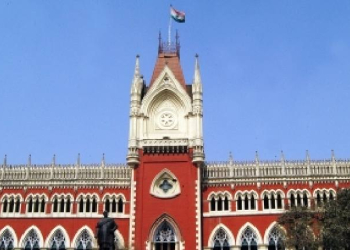Sultanpur Lodhi (Punjab): In a heartwarming gesture, after rescuing hundreds of marooned villagers from floodwaters in Punjab, environmentalist Sant Balbir Singh Seechewal, who hogged the limelight after reviving the almost dead 160-km-long Kali Bein, a rivulet sacred to the Sikhs, on Thursday launched the next stage of the relief operation — to transport mass livestock in the newly-made boat crafted by using indigenous knowledge.
The AAP’s Rajya Sabha MP, Sant Seechewal, along with his volunteers has been moving in boats from house to house, from dawn to dusk every day since August 11, to provide relief material to the affected people and fodder to the remaining livestock that has survived the floods, even as many of them perished.
This new raft has been made in three days under the guidance of Padamshree Sant Seechewal, whose work to revive the sacred rivulet with the people’s participation was lauded by former President of India late Dr Abdul Kalam.
“Floods in the state have severely affected not only human life but also domesticated animals. A new fleet has been launched for the rescue of animals in large numbers from the flood-affected areas. Through this specially built boat, livestock and farmers’ tractors can also be evacuated to higher locations,” Sant Seechewal, who is known for wearing his trademark maroon robes, told IANS.
In one sortie, up to 20 cattle can be transported to a safe place, depending upon the place to relocate them.
Also, the farming machinery, including a combine harvester, can be transported.
Widely known as ‘Baba ji’, Sant Seechewal and his volunteers every day cover a radius of 32 kms in 10 hours in Mand, an island on the Beas River, reaching every house trapped in waist-deep turbulent water to provide ‘prasadam’ (food).
Currently, 46 villages in Mand in Kapurthala district have been impacted by the flood, with more than 15,000 acres of crops damaged.
Braving the swirling floodwater, Sant Seechewal said the swollen Beas River, flowing continuously fast and above the danger mark has breached many temporary embankments and also changed its course.
“Due to the changed course of the river, the devastation is maximum this time as compared to the 2023 floods in the state,” he said.
He said continuous efforts are being made to save the sensitive parts of the temporary embankments.
He is also seen feeding the abandoned cattle stranded in the flooded paddy fields and dogs in houses, largely abandoned.
Sant Seechewal himself fills sand in bags and carries logwood at the river breach sites to prevent further damage.
He appealed to philanthropists to donate motorboats as roads in the area are submerged in water and they are relying on boats to ferry essentials, including food, drinking water, and fodder for livestock. He said it would take at least 20 days for the water to recede from fields and human habitations.
“Thirty to forty per cent of the inhabitants have already moved or evacuated to safer places. Our duty is to take care of elderly or male family members who preferred to stay back in their marooned houses. We are reaching out to at least 350 houses every day in four boats to provide them ‘langar’ (community cooked food) and essentials,” he said.
Besides Punjab government boats, the National Disaster Response Force (NDRF) and the Indian Army’s boats have been deployed in relief operations across the state that is witnessing the worst floods in four decades.
On social networking sites, people are thanking a gentleman from Kapurthala for turning his factory premises into a place for construction of boats. “Ramgarhia Sikhs building boats for flood affected areas of Punjab. Pura punjab ik hai. Love my Sikh brothers,” a post on X says.
Punjab Revenue Minister Hardeep Mundian said the state is reeling under one of the worst floods in recent decades, with widespread crop devastation reported in 175,216 hectares.
He said Gurdaspur, Amritsar, Mansa, Ferozepur and Fazilka are among the worst-hit districts, accounting for the bulk of the agricultural losses. The scale of damage to crops, villages, and population underlines the severity of the calamity that has gripped 23 districts of Punjab.
(IANS)
















